Abstract
The key pecking of eight pigeons was maintained on a variable-interval 1-minute schedule of food reinforcement. Sometimes, all responses between 35 and 50 milliseconds in duration produced a shock; sometimes, all responses between 10 and 25 milliseconds produced a shock; sometimes, shocks were produced by pecks without regard to duration (nondifferential punishment), and sometimes shocks were delivered independently of responding. Punishment of 35- to 50-millisecond responses selectively suppressed those responses, while punishment of 10- to 25-millisecond responses and nondifferential punishment suppressed responding overall but did not suppress responses of particular duration. Punishment of 35- to 50-millisecond responses suppressed key pecking slightly less than did nondifferential punishment. Punishment of 10- to 25-millisecond responses and response-independent shock produced roughly equal amounts of suppression, substantially less than the other punishment procedures. The data support the view that there are at least two kinds of key peck, identifiable on the basis of duration, one of which (short duration) is insensitive to its consequences.
Keywords: punishment, key-peck duration, response-independent shock, pigeons
Full text
PDF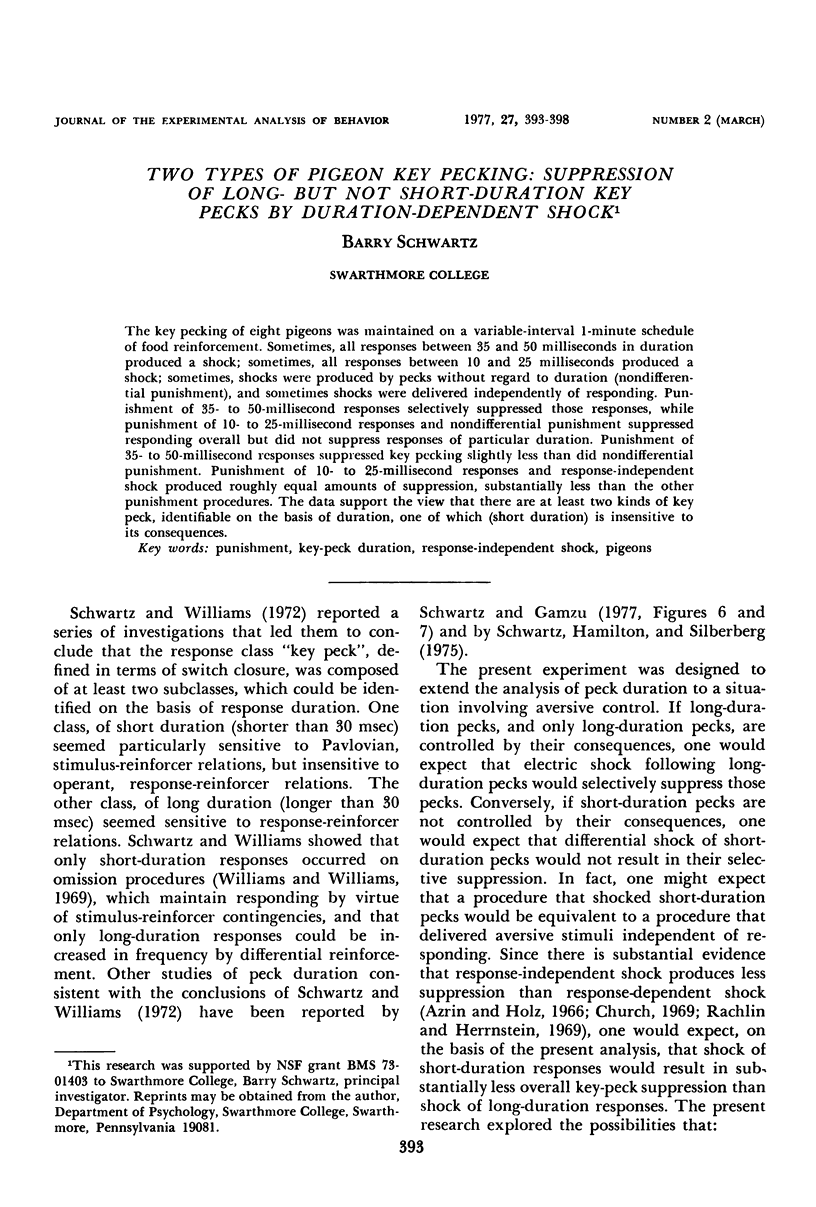
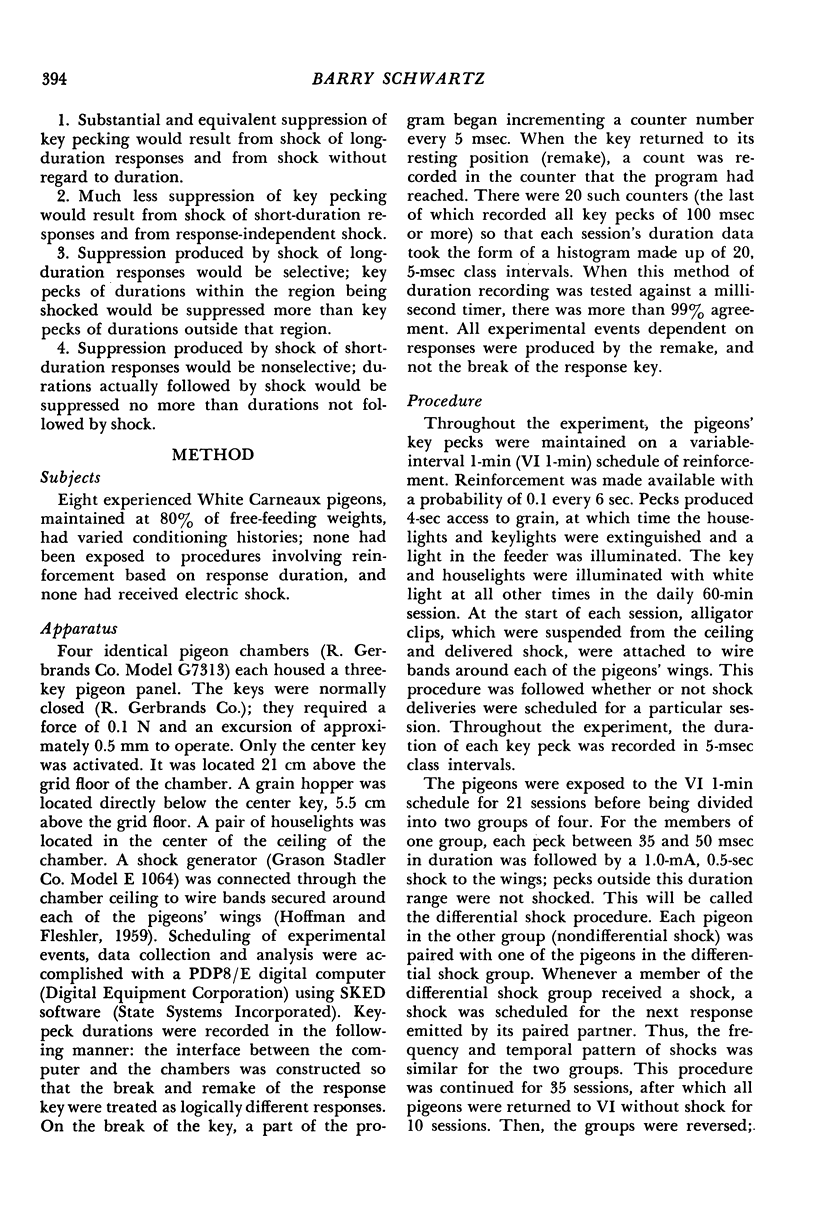
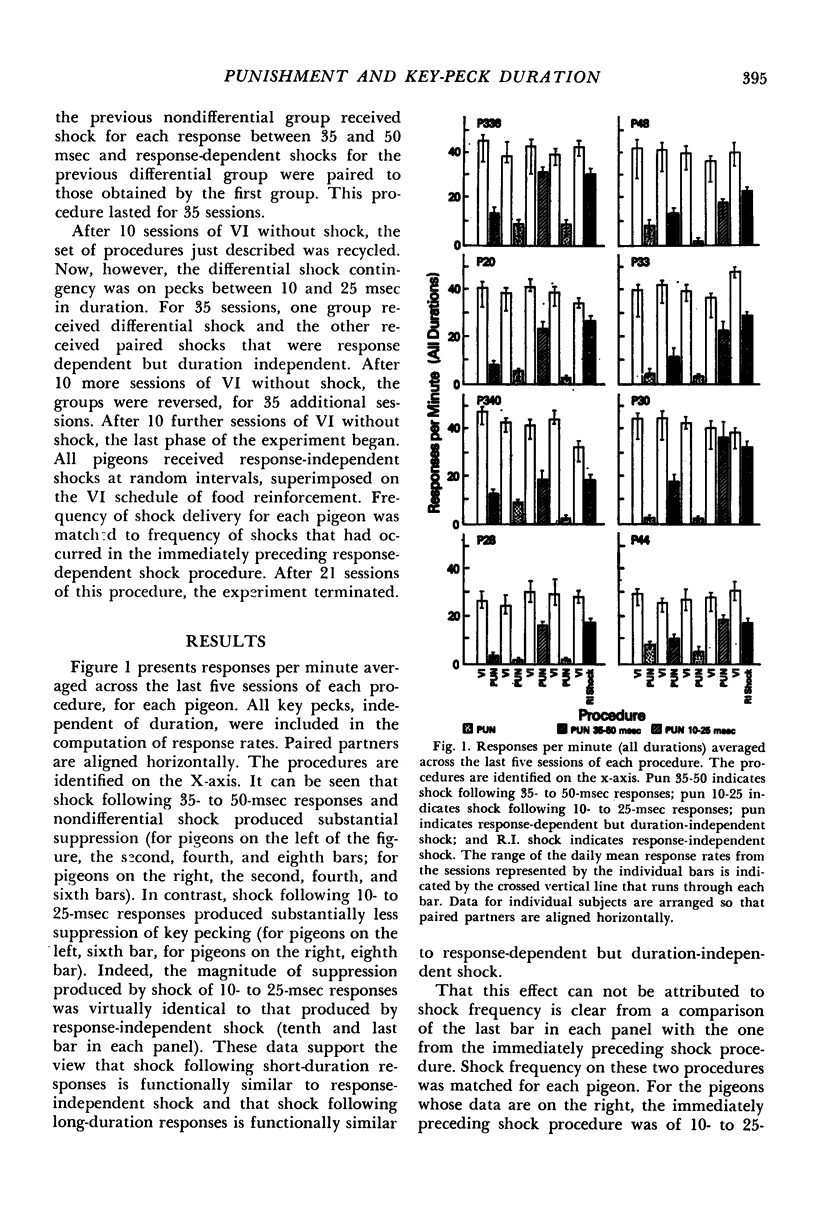
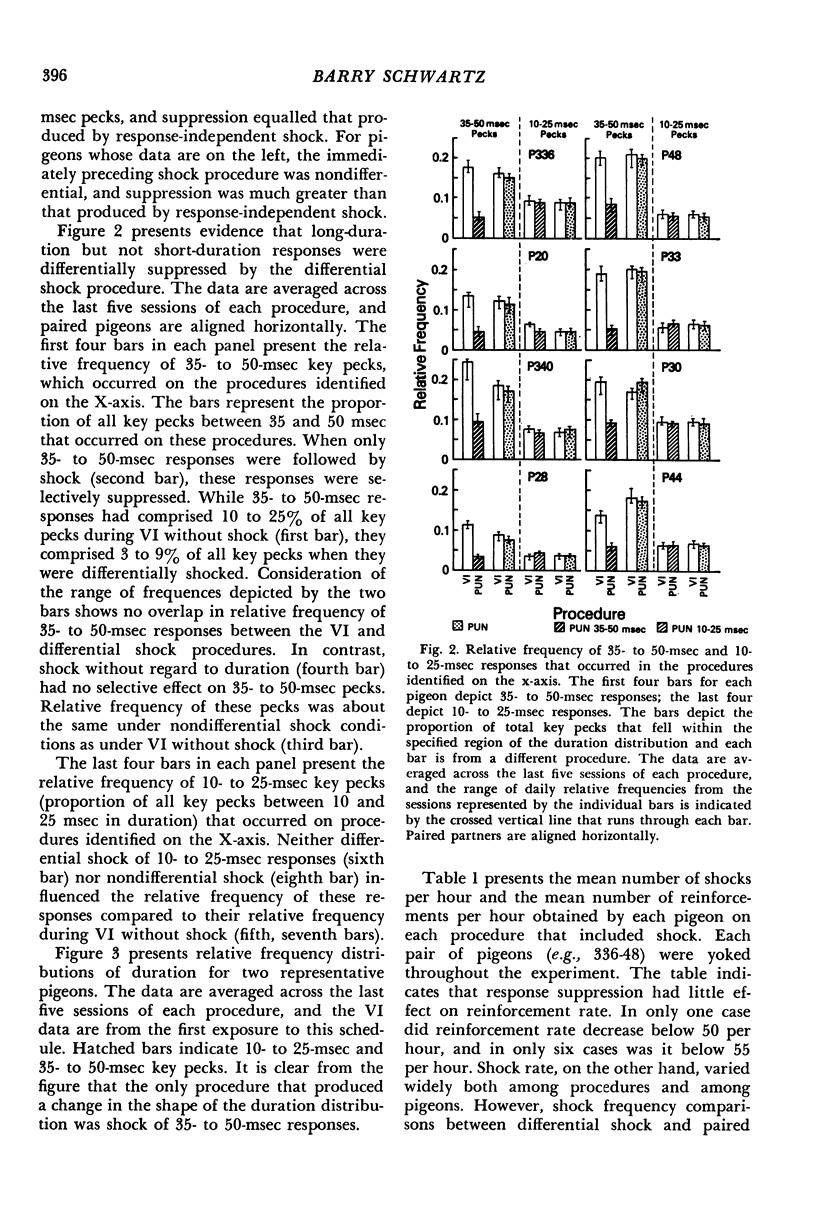
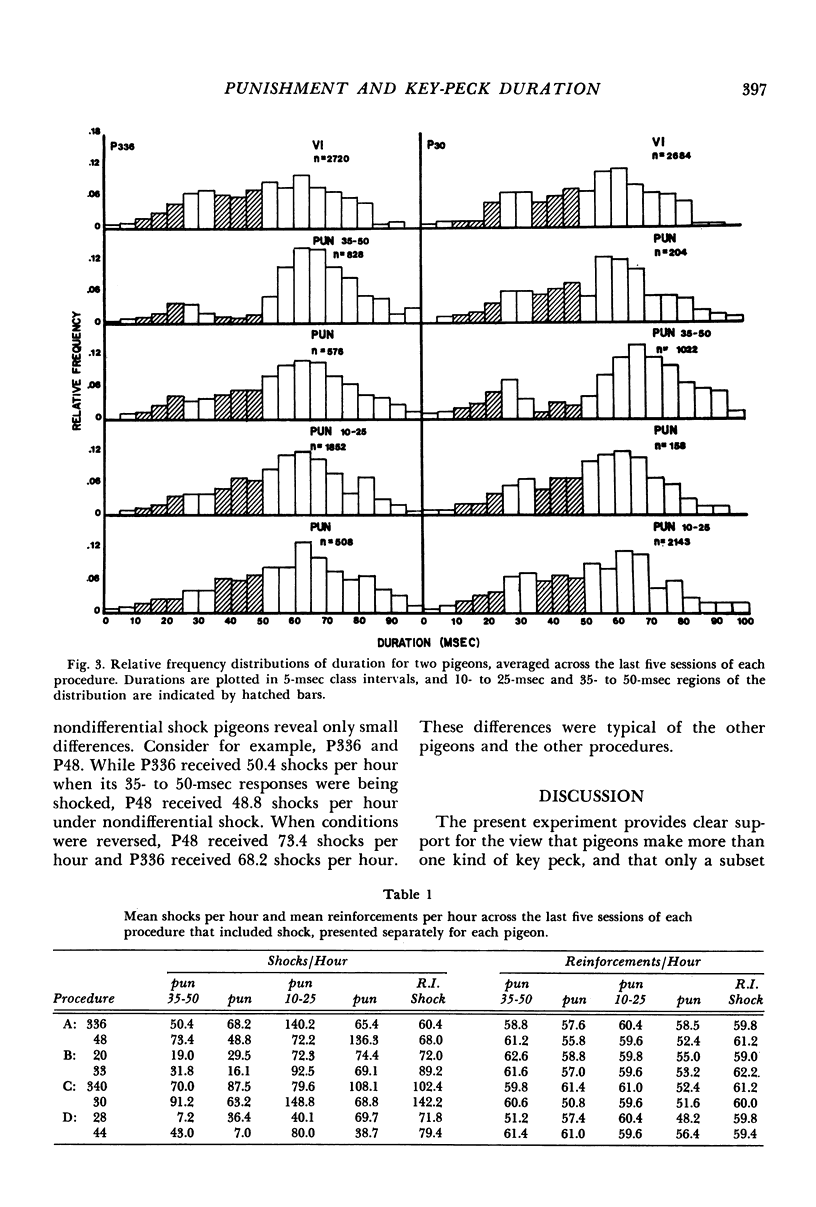

Selected References
These references are in PubMed. This may not be the complete list of references from this article.
- HOFFMAN H. S., FLESHLER M. Aversive control with the pigeon. J Exp Anal Behav. 1959 Jul;2:213–218. doi: 10.1901/jeab.1959.2-213. [DOI] [PMC free article] [PubMed] [Google Scholar]
- Schwartz B., Hamilton B., Silberberg A. Behavioral contrast in the pigeon: a study of the duration of key pecking maintained on multiple schedules of reinforcement. J Exp Anal Behav. 1975 Sep;24(2):199–206. doi: 10.1901/jeab.1975.24-199. [DOI] [PMC free article] [PubMed] [Google Scholar]
- Schwartz B., Williams D. R. Two different kinds of key peck in the pigeon: some properties of responses maintained by negative and positive response-reinforcer contingencies. J Exp Anal Behav. 1972 Sep;18(2):201–216. doi: 10.1901/jeab.1972.18-201. [DOI] [PMC free article] [PubMed] [Google Scholar]
- Williams D. R., Williams H. Auto-maintenance in the pigeon: sustained pecking despite contingent non-reinforcement. J Exp Anal Behav. 1969 Jul;12(4):511–520. doi: 10.1901/jeab.1969.12-511. [DOI] [PMC free article] [PubMed] [Google Scholar]


